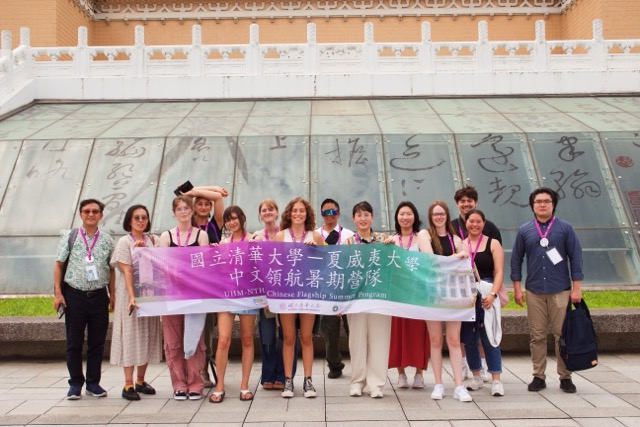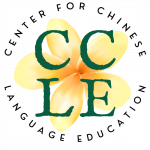UHM-in-Taiwan 24 Summer Program
Jeno Calara
Sept 17, 2024

The UHM-in-Taiwan 2024 Summer Program welcomed a cohort of 11 students to participate in an intensive 8-week program aimed at improving their Mandarin proficiency. Students spent two weeks in the bustling city of Taipei and the remaining six weeks in the quieter city of Hsinchu. Through weekly cultural excursions and explorations, the program enabled students to take full advantage of various cultural and historical sites to achieve their language proficiency goals. Most importantly, students engaged in a project-based language learning (PBLL) initiative focused on Taiwan’s history, culture, and people.
On average, students studied in the classroom five days a week. Each course level included three hours of classroom instruction, one hour of smaller group classes, one hour of listening practice, and half an hour of one-on-one tutoring.

Outside the classroom, students immersed themselves in the target language by participating in weekly excursions. The first destination was the National Palace Museum, which houses nearly 700,000 ancient Chinese artifacts spanning 8,000 years of history, from the Neolithic age to the modern era. This was followed by a visit to the Kuo Yuan Ye Museum of Cake and Pastry, where students baked their own pineapple cakes as souvenirs. Another trip took students to Dadaocheng, where they created their own milk tea carriers using traditional Taiwanese patterns. The Taipei portion of the program concluded with a visit to Jiufen, a town featuring narrow, winding alleyways filled with shops, restaurants, and tea houses that offered a glimpse into traditional Taiwanese life. The highlight of this excursion was enjoying tea at the famous Amei Tea House, which provided breathtaking views of the mountains and ocean.
After settling into Hsinchu, students visited Hsinchu Old Town, where they strolled through historic areas, including Hsinchu Station. Another excursion took them to Hsinchu’s Yamai Tribe, where they were introduced to the nomadic Tayal culture, offering insights into the tribe’s rich traditions. This was followed by a weekend-long trip to Sun Moon Lake, a destination rich in natural beauty and home to the Chung Tai Monastery and Museum. Upon returning to Hsinchu, students began preparations for their PBLL projects. One featured location was Zhongyang Market, where students immersed themselves in the local culture of Hsinchu. Another was the Jiangjun Military Dependents’ Village, where students explored the historical significance of these buildings. Students also visited the TSMC Museum, showcasing the world-renowned chip manufacturing company responsible for a large portion of the world’s semiconductor production.

The UHM-in-Taiwan 2024 Summer Program concluded with a closing ceremony featuring presentations of the PBLL projects that students had worked on tirelessly over four weeks. Two groups presented their research and projects on Zhongyang Market and Jiangjun Military Dependents’ Village. The Zhongyang Market group created a social media-friendly video emphasizing the market’s importance, while the Jiangjun Military Dependents’ Village group designed a worksheet to spark children’s interest and appreciation for the village. The program officially ended with a graduation video compiled from footage and photos taken throughout the program. The closing celebration included a hotpot gathering, where students and teachers marked the program’s success and bid each other farewell, bringing the UHM-in-Taiwan 2024 Summer Program to a memorable conclusion.
